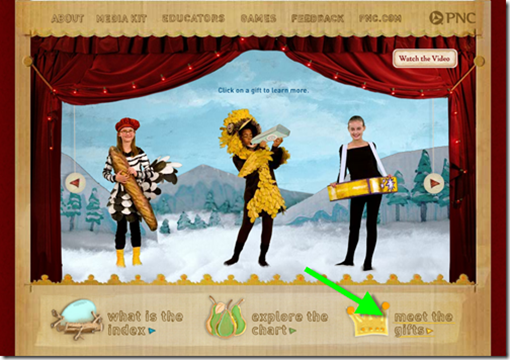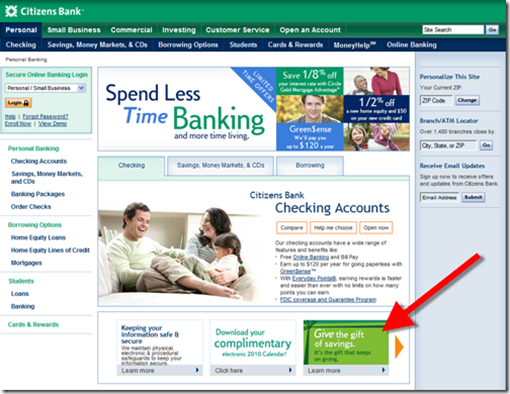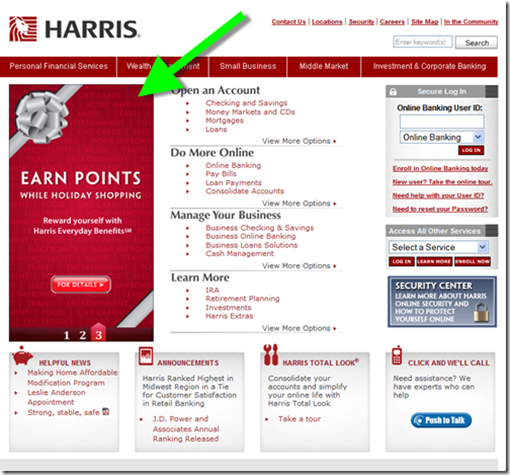 Leave it to Mint to make 140 characters of personal finance chatter sexy. Yesterday, I noticed a link to a new feature called Money Tweets tucked away at the bottom of an account-alert (see inset below; note 1). The site launched in November (press release), but I was all wrapped up in P2P payments at the time (note 2) and never looked at it.
Leave it to Mint to make 140 characters of personal finance chatter sexy. Yesterday, I noticed a link to a new feature called Money Tweets tucked away at the bottom of an account-alert (see inset below; note 1). The site launched in November (press release), but I was all wrapped up in P2P payments at the time (note 2) and never looked at it.
 Mint’s effort is the best use I’ve seen of Twitter as a content-creation tool (see screenshot #1, below; note 3). And once established, the site basically runs on autopilot, making it a cost-effective way to bring fresh, real-time content to your customers.
Mint’s effort is the best use I’ve seen of Twitter as a content-creation tool (see screenshot #1, below; note 3). And once established, the site basically runs on autopilot, making it a cost-effective way to bring fresh, real-time content to your customers.
Money Tweets has five content areas:
- Aggregated tweets from 20+ writers on five subject areas: savings, investing, budgeting, loans, and retirement
- Tweets about Mint using Twitter search
- Tweets from Mint using its Twitter stream
- Tweets from anyone answering the company’s Question of the Day such as today’s topic, “Is now the time to buy a house?” (upper right in screenshot below)
- Tweets from anyone using keywords taken from personal finance trending topics
Bottom line: Aggregation of the tweets from personal finance experts (with extra credit for adding your own voice to the stream) is a promising tactic for your online marketing plan. But most (all?) financial institutions will want to steer clear of streaming unmoderated tweets from anyone mentioning your company’s name. That’s going to cause way too many internal headaches as it attracts spam and customer complaints.
Main page at Mint’s Money Tweets (link, 8 Jan. 2010)
Notes:
1. As an aside, Mint’s superb graphic design extends even to its email alerts, which look like a sticky note on the screen.
2. For more on the P2P payments market, see our latest Online Banking Report, published earlier this week, Making the Case for Person-to-Person Payments.
3. For more on using Twitter, see our May report, Connecting to Customers with Twitter.



















![image_thumb[7]](http://s3.amazonaws.com/finovate-archive/old/WindowsLiveWriter/7cb11ef65bb9_97C7/image_thumb%5B7%5D_thumb.png)







![image_thumb[6]](http://s3.amazonaws.com/finovate-archive/old/WindowsLiveWriter/7cb11ef65bb9_97C7/image_thumb%5B6%5D_thumb.png)



















